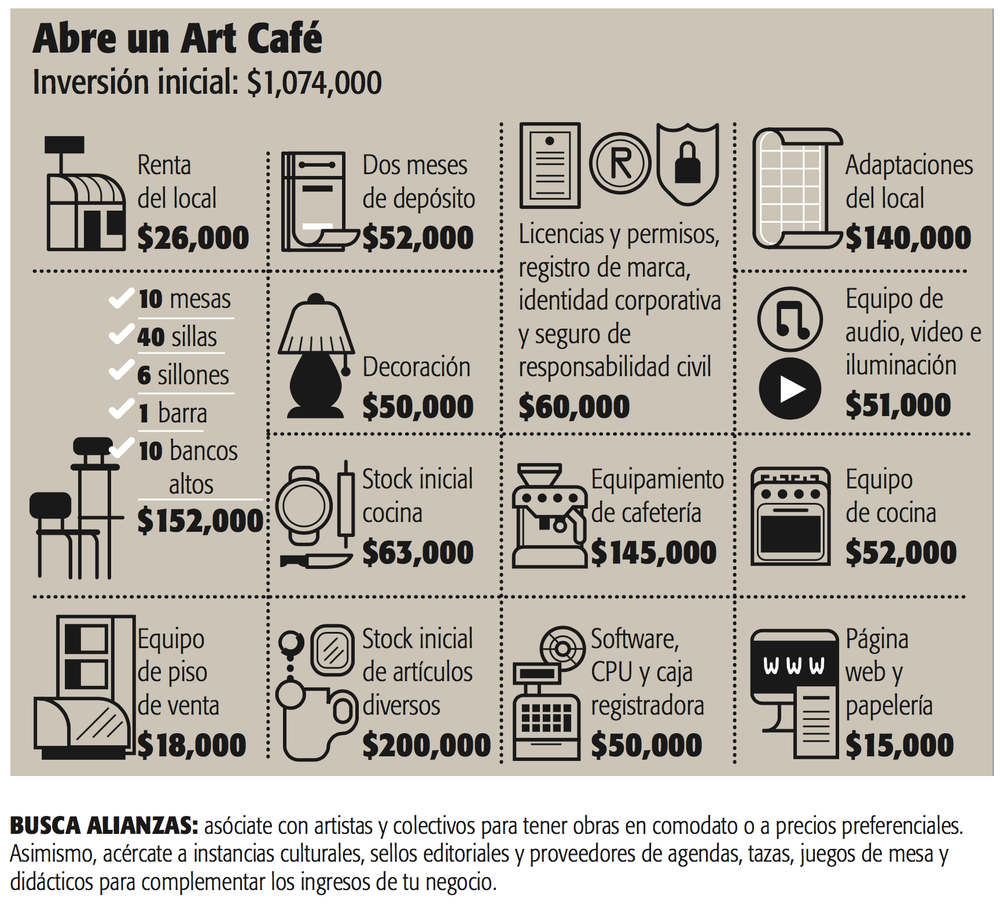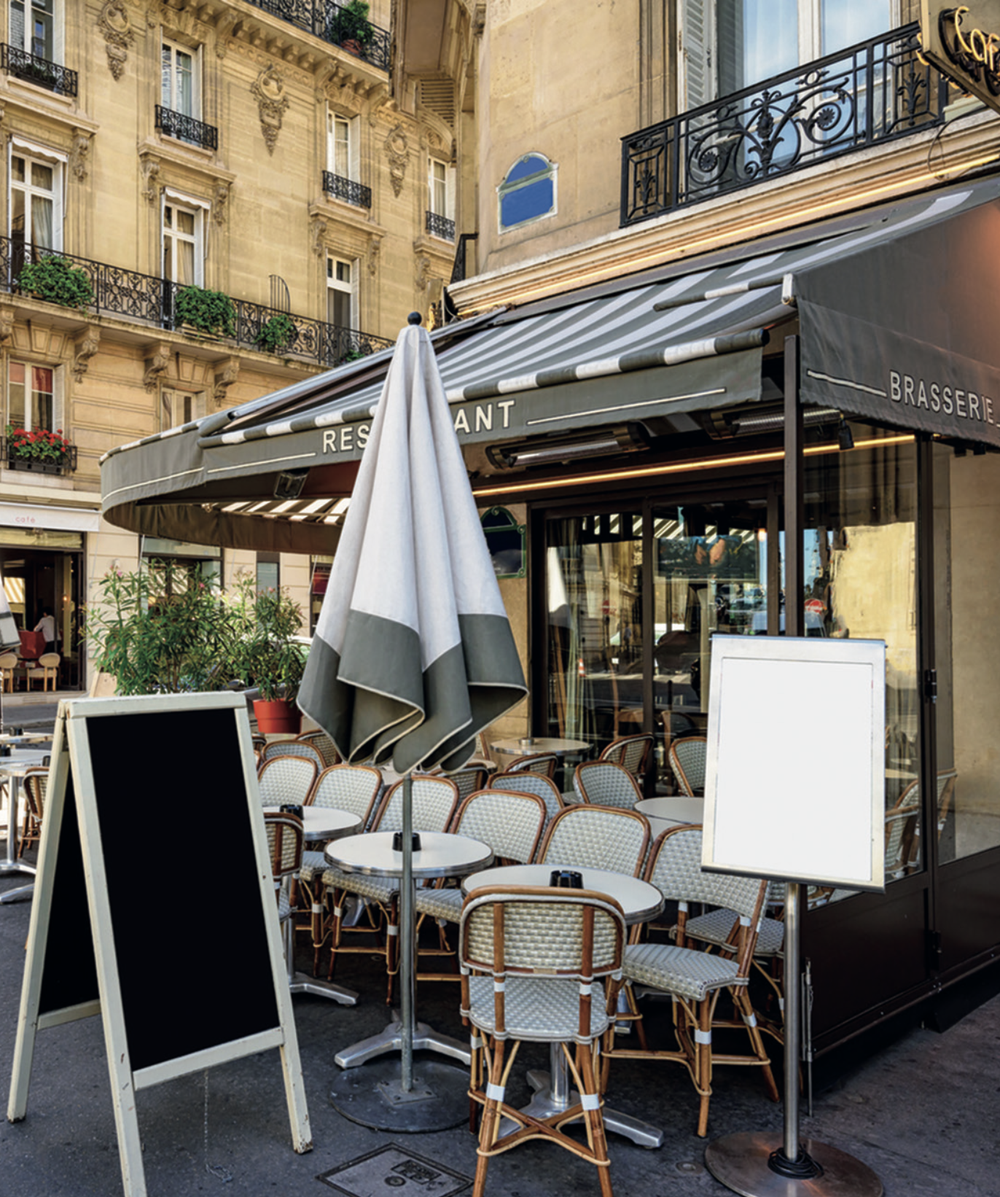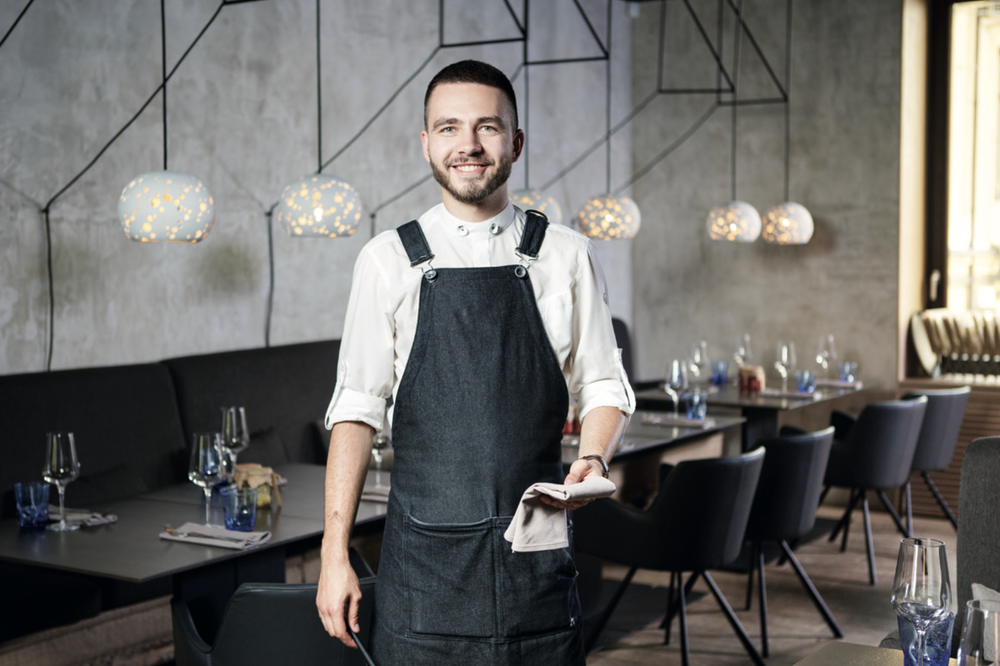Opinions expressed by Entrepreneur contributors are their own.
Six years ago, Ramón Correa and Maripaz Fernández had the dream of opening a coffee shop, knowing that their opportunity to successfully impact a market full of independent and chain proposals depended not only on the quality, preparation and characteristics of the coffee, but on the differentiation and experience that they could offer to consumers.
In favor they had enthusiasm and a greater culture of the Mexicans about the consumption of coffee . Against it there was a fierce competition that in the previous six years had doubled the number of coffee shops and the very high probability of failing due to their ignorance of the business.
Despite this, this duo, made up of an industrial engineer and a communicator, analyzed the market, developed a concept and invested their savings in Garko , a cultural café located south of Mexico City where, in addition to selling the aromatic from Coatepec, Veracruz and from other parts of Mexico, they broadcast films from the “National Cineteca Circuit”, exhibit pictorial, sculptural or photographic work; they put on micro plays, present literary works and, of course, sell books and magazines.
“The beginning was not easy. He did not know anything about the business, much less about gastronomy. I had to train and learn by trial and error. First we wanted to open 24 hours, but then we saw that it was not functional. In the end, we opted for a very organic concept where we allow for the dissemination of culture and the consumption of good coffee. We have been operating with this model for six years, ”says Ramón.
This cafeteria is inserted in a circuit of cafes-bookstores-galleries that, although they are a constant in Europe, in Mexico they are gaining strength due to a coffee culture that is in full swing and the creation of new experiences linked to the consumption of coffee. aromatic.
To date, there is no reference on how many establishments of this order there are in Mexico due to their high degree of specialization, what is known is that they are a business opportunity with growth potential thanks to their differentiator.

Customer segment
Before raising the curtain of art café, you should know who your consumer is , where they are, what their motivators are and how you can connect with them; who is your competition, where is it located and what are its strengths or weaknesses.
In Mexico there are no studies available on the number of coffee shops or cultural coffee shops, what is known is that there are 61,653 economic units specialized in the sale of coffee, according to the National Directory of Economic Units ( DENUE ).
These businesses are inserted in a national market valued at 10,475 million, where per capita consumption is 1.4 kilos per year, according to the Analysis of the Coffee Consumption Market in Mexico 2016 , carried out by Euromonitor for the Mexican Coffee Association ( Amecafe ).
The research warns that while the number of chain coffee shops in Mexico increased at a compound annual growth rate of 2.6% from 2011 to 2016; independent coffee shops have lost share, due to the expansion of chain businesses.
For many this might seem like a red light, but for entrepreneurs in the field this is an opportunity considering that their differentiators act as a magnet for consumers who appreciate the quality, origin and preparation of coffee, but who at the same time seek to leave the market. standard.
Value proposal
A cultural cafeteria is not only a meeting point to taste a cup of that aromatic or eat a sandwich, a cake or a salad: it is a space to open the senses to art and culture from an offer of products and services that It includes the sale of books, records, diaries, mugs, bookmarks and even puzzles. Also space for exhibitions, concerts and literary and artistic presentations.
It is not clear what its origin is, what is known is that in Mexico it has given rise to concepts such as El Péndulo, Wiser Books & Coffee and Librería Porrúa Chapultepec, as well as other spaces that promote culture from different trenches.
Garko, for example, opens space to pictorial, plastic and visual creators; to film cycles and theater histriones. Punto de Cruz is a specialty cafeteria and restaurant with exhibition and sale of Huichol art, black clay, Puebla talavera, fine silver and blown glass. And Arts & Coffee Co. , in addition to a cafeteria, functions as a gallery and venue for independent artists.
The value proposition of these spaces converge on what consumers get around a cup of coffee: art, culture and a space to relax, coexist and create. Do you dare to undertake in the sector?
Distribution channels
The value proposition of a cultural cafeteria is delivered on site , which is a gift for the senses considering that these spaces have been designed to encourage concentration, reading, relaxation and contact with the arts.
Food and drinks are prepared in the kitchen / bar and arrive at the diner’s table through waiter service or through a self-service scheme where you pay first and then consume. They can also be delivered to your home through a food delivery service, such as UberEats or Rappi .
Books, magazines, movies, records, mugs or other designer / collectible items are sold directly on the floor, but can also be marketed online from a website or through an e-commerce platform such as Shopify or Magento .
What about the art pieces? These are appreciated and sold in every cultural cafe, but can also be marketed online. Punto de Cruz does so through the Arte Yawi site, its sister gallery specializing in the sale of pieces produced by Huichol artisans, explains Jorge Martínez, operating director of the café-gallery .
Regardless of the distribution channel you use, make sure that your consumers get the information they need about a work / piece / presentation, and that at the same time they receive excellent service on the sales floor.

Relations with clients
In a cultural cafeteria every day the capacity for relationships, communication and service of the staff in charge is put to the test. We recommend you to welcome with a smile, greet frequent customers by name (either in the bar or on the sales floor) and be attentive to what they need (do not exceed two or three visits to the table during the visit of the diner).
Another form of relationship is through technology, so you can use emailing, WhatsApp and social networks to communicate to your clients the billboard of the month or a special promotion. Also put a direct telephone line with the management to know possible complaints and suggestions.
Sources of income
The economic benefit from the sale of foods such as sandwiches , salads, croissants, muffins, bread and cakes per slice leaves an average profit of 25% after taxes, while the sale of coffee is somewhat juicier.
Sylvia Gutiérrez, specialized advisor to the Mexican Association of Specialty Cafes and Cafeterias ( AMCCE ) confirms this, as she says that while producing a cup of coffee costs between eight and 10 pesos, the price to the public ranges between 25 and 34 pesos.
To this flow of income from food and beverages is added the proceeds from the sale of books, magazines and other design, art or collection items. In Garko, for example, they sell books from La Otra publishing house and Algarabía magazines. Also dividers, mugs, diaries, cup holders, board games and mental agility. In Punto de Cruz Huichol art and other ethnic groups in Mexico. Anything goes! The important thing is to be careful to develop alternative monetization models.
For example, rent a part of the space for literary presentations, concerts, recitals or other cultural expressions. Also follow in the footsteps of Janet Arroyo, from Arts & Coffe Co: give it away as a courtesy for a certain number of hours in exchange for a minimum consumption of food and beverages.
“We use the space for independent artists looking for a place to exhibit painting, photography, oil, watercolor. We are a very diverse place ”, adds the owner of that specialty cafe that also functions as a gallery for independent artists.
To be clear about how to monetize the space, make a business plan with financial projections for each business unit. Review it every six months and adapt it to your needs.

A la carte supplies: whole grain coffee, milk, chocolates, whipped cream, cinnamon, chopped nuts, granules and sugar figurines, among others.
Key resources
To start your cultural cafe you need a place between 80 and 150 square meters. Garko, for example, has a 120-meter venue that he has taken advantage of with a kind of lid that he uses for private presentations. Punto de Cruz is more like a small boutique café where 30 people can sit and 45 stand, while Arts & Coffe Co. has a terrace that is in great demand among those who want to work, study or read.
Solved the theme of the premises, create a cozy atmosphere. Maricruz and Ramón, from Grako, went for an organic wave with wood; Arts & Coffee Co. recreated a comfortable space, with armchairs, cushions and accessories brought from multiple trips and Punto de Cruz opted for wood and plants to highlight an art deco venue.
The equipment is another basic. The Mexican Association of Specialty Cafes and Cafeterias (AMCCE) advises investing in a professional coffee maker, dosing grinder, heavy-duty blender, refrigerator and compactor, stainless steel foaming jugs, whipped cream dispenser, brushes, and rags. cleaning and espresso measuring glasses; spoons and devices for milk froth and thermometers. Add to this a granita machine.
For the kitchen, buy a stove, griddle, microwave oven, fryer, blender, food processor, stainless steel work table, refrigerator, various utensils (pots, pans, knives, spoons, etc.), glassware, crockery and cutlery. Kitchen and cafeteria supplies must be added, as well as a computer, administration software and a cash register for the payment area.
On the display / sales floor, create micro-environments with bookcases, shelves, and other furniture; conditions with directed lights. Use the walls to display photographic and pictorial work, and culminate with a closed circuit television and an audio system to set the scene.
A business of this type involves many details, both in the kitchen and on the sales floor. So that nothing escapes you, schedule activities, purchases, facilities, adjustments, etc.

Key activities
The success of an art café does not only depend on its location and the quality of its products ; but also the training of those who are in charge of the business. What staff do you need? As a matter of principle, hire a professional barista who, in addition to using the coffee maker, knows specialty filtering techniques (there are courses at the AMCCE). Complete your table with an assistant at the bar, two people in the kitchen, two people in the sales floor, a cashier, a cleaning person and a general coordinator (it could be the entrepreneur).
As a reference, we share that six employees work at Arts & Coffe Co., 10 at Garko and five at Punto de Cruz. Depending on the performance of the business (and considering that the best hours are between 7:00 am and 11:00 am and from 5:00 pm to 9:00 pm with peaks from Thursday to Saturday with an emphasis on the cold months), you can hire temporary or weekend staff.
With the template covered, we recommend making operation manuals. Focus on the warehouse, kitchen and sales floor. Take the time to describe the processes in each area of the job.
Finally, consider some tactics to retain your customers. You can use the traditional frequent consumption card, which grants discounts or free products, in exchange for repetitive purchases; or to special promotions for a certain day of the week.
Analyze the viability of each offer, against your financial projections, and remember that no promotion is a substitute for good customer service.
Key alliances
This aspect is one of the most important for a good operation . Look at suppliers, distributors, other companies and, of course, the artists whose work you will be exhibiting / selling in your coffee shop.
It begins by making agreements with coffee producers, distributors of supplies for cafeterias and suppliers of perishables for restaurants. The idea is that they leave you fresh produce two or three times a week and grocery once every seven days.
Another key alliance is with cultural entities. The National Cinematheque, for example, has a specific collection to be broadcast in private spaces with a prior collaboration agreement. The program is free. Check the bases at cinetecanacional.net.
You can also partner with artists and groups to have work on loan or at preferential prices. Punto de Cruz has an alliance with the Yawí Traditional Art Gallery and in collaboration with the Calpulli Netzahualcóyotl cooperative society has access to various pieces made by Huichol artisans.
They receive a double payment: the first when they sell their piece to the gallery and the second when the establishment markets the work (in this case the artist is reimbursed 50% of the total sale to the final consumer), says Jorge Martínez, operational director of that space.
There are many alliances that you can make. Analyze publishing labels, providers of diaries, mugs, board games, and so on.


Cost structure
To open a cultural cafeteria an initial investment of 900,000 pesos and up to 1.5 million is required , due to the adaptations to the premises, the equipment and the assortment.
For example, the rent of a premises of approximately 100 square meters, licenses and / or permits, brand registration, development of corporate identity and civil liability insurance requires an investment of around $ 138,000 pesos.
For the adaptation of the premises (delimitation of spaces, electrical, hydraulic and gas installation; toilets), floor furniture, decoration and audio, video, lighting equipment, a base capital of 393,000 pesos is needed.
The initial stock of cafeteria and kitchen supplies requires a minimum of 63,000 pesos; while the stock of various items for sale on the floor (movies, records, mugs, puzzles, key rings, cards, agendas and other design / collection items, among others) requires around 200,000 pesos.
How much do you need to equip kitchen, cafeteria and sales floor (furniture)? Around $ 215,000. Add to this $ 65,000 to purchase a computer, cash register, management software, website, and stationery.
Finally, remember to look for established suppliers, ask for guarantees, and make written contracts. Do not forget your business plan, working capital to ‘endure’ the first months of operation and the best attitude to bring out your capacity as an entrepreneur. Your next business is waiting for you!


